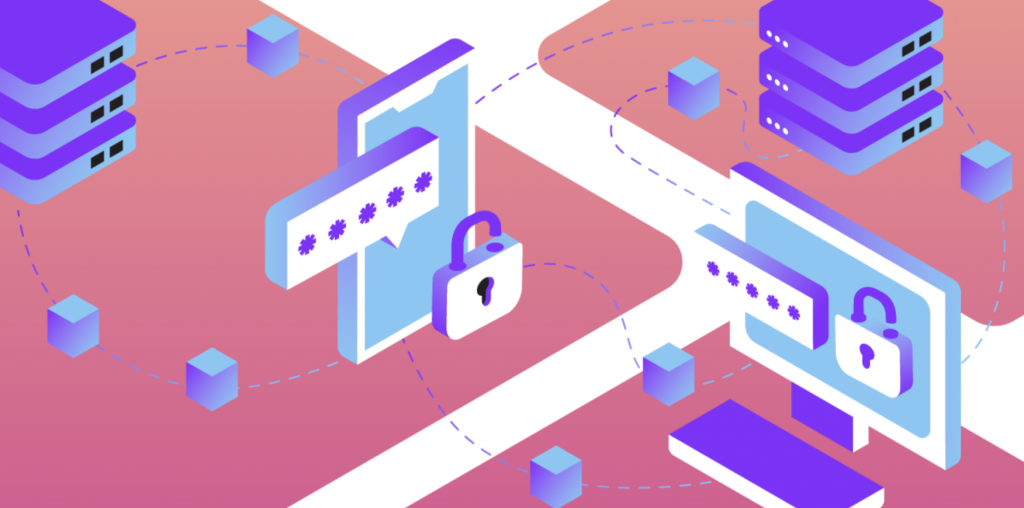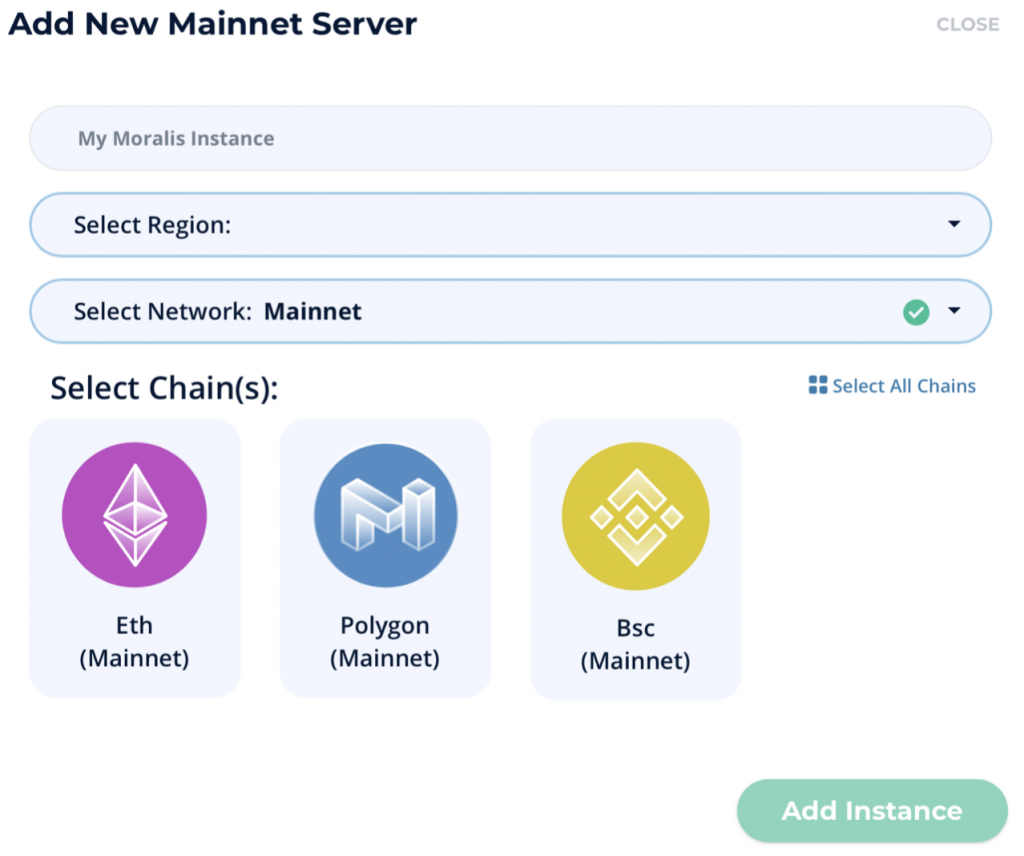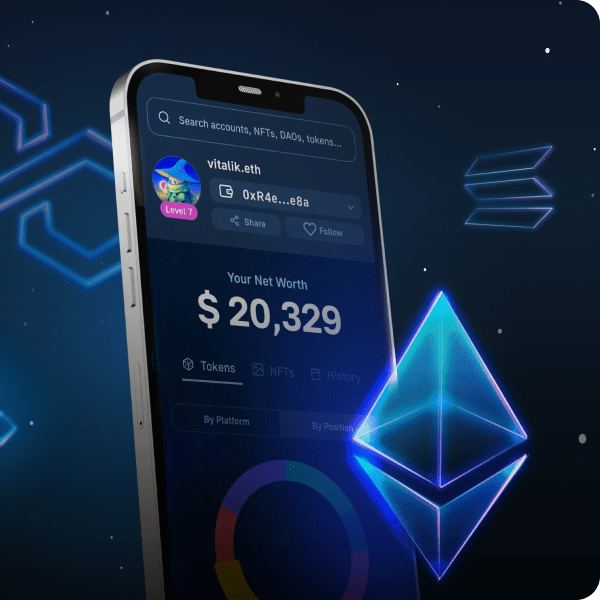Most applications that you know and use today are so-called “Web2 applications”. What’s more, Web2 app development is highly mature. Many different tools and middleware are readily available, making traditional app development relatively accessible. In contrast, the next big thing, Web3 has not yet seen the same accessibility. However, Web3 is growing rapidly, and new platforms are popping up to make developing dApps (decentralized applications) more convenient. As a result, Moralis makes Web3 and dApp development just as accessible as creating legacy Web2 applications. Furthermore, Web3 is characterized by different development environments, one of which is Polygon. The number of development environments can make the experience confusing, but to break it down, we will take this article to look closer at how to build Polygon dApps.
The first logical step to become a Web3 developer is to join Moralis, as this is the easiest way to get going. With Moralis, you will be able to speed through some of the traditionally most time-consuming and resource-intensive parts of developing dApps. This means that you can save time, money and resources when prototyping and deploying your dApps, without any compromises. Since developing with Moralis is so beneficial, we will focus on how to build Polygon dApps easily with Moralis.
So, what then makes Moralis the best dApp development platform? In short, Moralis allows you to develop serverless dApps and provide an already developed backend infrastructure. Even more convenient is that the infrastructure is infinitely scalable. As a result, you can put all your efforts into developing the frontend of your application. So, if you want to become a dApp developer, sign up with Moralis for free today!
What is Polygon?
Before we take a closer look at how to build a Polygon dapp, we should try to understand the basics of the Polygon network better. The reason for this is to understand when this protocol is best suited for development. So, what is Polygon?

As you may know, Polygon previously went by the name Matic, which they changed in a rebranding process earlier this year. Polygon is a framework and protocol for building blockchain networks compatible with Ethereum. The protocol is looking to create a multi-chain Ethereum ecosystem of Ethereum based blockchains.
Polygon has set out to solve some of the significant issues Ethereum has been experiencing as of late, such as congested networks. Furthermore, the network not only tries to solve these issues, but they are doing so while keeping the high level of security of the Ethereum chain.
How does Polygon Solve these Issues?
Polygon tries to solve these issues with a multi-chain ecosystem where they combine the Ethereum blockchain with other foreign chains. As this is their strategy, they can solve some of the problems with congested networks. Here are some of the features of the Polygon network:
- Security — Polygon is able to offer security services in a modular model, meaning that developers can choose components to include. These are services that can be provided by either a set of validators or Ethereum.
- Modularity — Polygon is of a modular design which means that it is prone to a high degree of customizability, extensibility, and upgradeability.
- Scalability — One of the problems that Polygon set out to solve was scalability. This is done by, for example, offering a scalable consensus mechanism.
- User experience — Polygon recognizes the issues with Web3 development and therefore offers a user experience similar to that of Web2. Furthermore, Polygon also features instant transaction finality along with gas-free transactions.
However, this is just an overview of the Polygon network and what they have to offer. There is much more to read up on, and if you are interested, we recommend visiting their official website. Here you will find more information on Polygon and the technology behind the protocol/framework.
Web3 dApp Development
Developing dApps does, in general, require three different elements. These components are a UI (User Interface), smart contracts, and a backend. All these components are crucial when developing Web3 applications to ensure that they are thriving on the market. However, from a traditional perspective, Web3 development has proven somewhat tricky.

Web3 frontend development shares many characteristics and the same principles as for Web2. The fundamentals are mostly the same, meaning that skills are required in, for example, JavaScript. However, one deviating factor between the two is that Web3 requires Web3.js. This means that developers need to know how to utilize this library when developing dApps.
However, the crucial issue of Web3 development has, traditionally, been with backend development. This process can be challenging to understand and can be a very time-consuming and resource-intensive procedure. Furthermore, not many people know how it’s done, which means that demand exceeds supply. This, in turn, means that hiring someone with the expertise can be costly. However, to solve this issue, we have been provided with a solution — Moralis.
Moralis is the way to develop dApps since the platform provides an infinitely scalable, already developed backend infrastructure. This means that it’s possible to build serverless dApps at a fraction of the time. With an already developed backend, developers can put all their efforts into frontend development and make the user experience as appealing as possible.
What is Moralis?
Throughout the rest of the article, we have touched on some of the main benefits of Moralis. However, there is much more to the platform, and we’ll take this section to elaborate further.
Moralis is the premier Web3 middleware platform, and helps you realize and connect your projects to a blockchains of your choice. The platform will help you save time, money, and effort, which is highly beneficial. Moralis does this by providing a fully managed, infinitely scalable backend infrastructure for its users. This allows developers to focus their time and resources on the frontend to develop the best dApps, rather than waste time manually setting up a backend.

However, not only does Moralis provide users with a backend, there are other useful tools available. For example, Moralis features native support for IPFS, MetaMask, cross-chain compatibility, the Moralis NFT API, and much more. Another neat and helpful feature that Moralis offers is Speedy Nodes.
Moralis’ Speedy Nodes provide you with some of the fastest and most reliable blockchain nodes on the market. Moralis Speedy Nodes feature full nodes for several different networks, such as BSC (Binance Smart Chain), Ethereum and the Polygon network. Furthermore, Moralis also provides users with full archive node versions of all these nodes, which can be very useful. If you want to learn more about nodes, then we recommend the following video, which further explains Speedy Nodes:
Furthermore, if you want to learn more about connecting nodes to your projects, then check out the following article. This is a full breakdown of how to connect to Polygon nodes, which is highly appropriate for building Polygon dApps.
How to Build Polygon dApps Easily With Moralis
Now that we better understand Web3 development and the benefits of Moralis, we can take a closer look at how to build Polygon dApps. The first step is to sign up with Moralis, as you need an account to gain the benefits of the services provided by the platform.
Once you have signed up, there are three main steps to getting your first project going. These steps are the following: 1) setting up a server, 2) installing the Moralis SDK (Software Development Kit), and 3) initializing Moralis.

However, these are just some of the essential steps of getting your Polygon dApp going. Once you are done with setting up the dApp, there are also other valuable tools that you can use when developing with Moralis, but we’ll get to those later.
Setup Process — How to build Polygon dApps
- So, the first part of setting up your project is to click the ”+ Create a new App” button at the top right of your screen. This will provide you with a drop-down menu to decide what kind of server instance you want to add. However, if either alternative is clicked, a window will pop up where you need to add a name, select region, select main- or testnet, and choose which networks you want to connect your project to. One of the many great things about Moralis is that the platform supports the synchronization of transactions between several blockchains. Consequently, this means that we can choose multiple networks in this step. However, as we are building a Polygon dApp, selecting this as one of the networks would be preferable. Once you have selected all your desired options, all you need to do is hit ”Add Instance” at the bottom of the screen.
- As soon as the instance is added, you will also need to install the Moralis SDK. There are several different ways in which you can install the kit. Two examples are to install the SDK through CDN or NPM. The NPM alternative would look like this:

- The third and final step is to initialize Moralis. The reason for doing so is to ensure that we can use it in our code. To initialize Moralis, we need to acquire information regarding our server. We can find all the necessary information by clicking the ”View Details” button on the server in question. This will provide us with some information, and what is interesting for this process is the App ID and Server URL. Once we have those, we can initialize Moralis in the following way:

Other Tips for how to Build Polygon dApps
Another recommendation is that you set up your local dev chain. A local dev chain can help the development process tremendously and make your life as a dApp developer more comfortable. Moralis provides guides on setting up a local dev chain and recommends two of the most prominent solutions out there: Ganache and Hardhat.
A local dev chain is an excellent tool since it allows us to test our dApps in a safe environment. Furthermore, setting up a local blockchain can help us save both time and money. The reason for this is that we can upload our smart contracts locally and test them instead of uploading them to an authentic chain. This means that we can avoid paying gas fees until our contracts work flawlessly.
However, if you are interested in learning more about local dev chains, how to set them up, and how to connect them to Moralis, then be sure to check out the Moralis YouTube channel. Here are two videos where Ivan on Tech demonstrates how easy the process is:
Moreover, there are some other practical ways to use Moralis in the development process of your Polygon dApp. Some examples are that you can authenticate users with MetaMask, save information regarding users, and query information from your database. For example, to authenticate users with Moralis, all you need to do is use the following command:
This will ask the users to connect with a wallet such as MetaMask and identify themselves. Once the signature is verified, a new user object will be created.

If you are interested in a complete guide on setting up a dApp with Moralis, we recommend the Moralis documentation that provides a quick start guide.
Existing Polygon Projects
There are many different dApps already developed on or closely connected to the Polygon network. Some notable and well-known projects are QuickSwap, Aave, and Polycat Finance. We will take this section to give you a short overview of these three dApps.

- QuickSwap — QuickSwap is a fork of the Uniswap protocol that is powered by the Polygon network. This means that QuickSwap is a decentralized exchange or DEX. As Polygon offers lower transaction fees, it allows QuickSwap to enable token swaps at a lower cost than some competitors.
- Aave — Just recently, Aave decided to explore opportunities with Polygon due to the congested networks of Ethereum. Aave is a protocol for lending and borrowing which allows users to lend money and earn interest on deposits. The protocol features many different cryptocurrencies such as their own coin, DAI, and USD Coin.
- Polycat Finance — Polycat Finance is a hybrid yield aggregator that Polygon powers. This means that the dApp offers both yield optimization and yield farming.
These are just some examples of existing projects on the market that are either built on the Polygon network or utilizes it in some ways. These are great protocols that demonstrate the capabilities of the Polygon Network. Maybe you will be the one to build the next prominent Polygon dApp through Moralis. Furthermore, if you are looking for some inspiration, then watch the following video giving some dApp development ideas:
How to Build Polygon dApps — Summary
As we are coming into a new web development paradigm, we see tools and platforms develop to make Web3 development as accessible as Web2. The Web2 scene is characterized by helpful middleware to make development more efficient and more comfortable. This is somewhat what Web3 is developing towards, and one step in the right direction is Moralis.
Moralis is the best platform for dApp development, and they allow you to develop serverless Web3 applications. Furthermore, Moralis provides its users with an infinitely scalable backend infrastructure taking away the hassle of developing complex backends for dApps. As a result, Moralis helps make dApp development more accessible and attractive to developers. This is because there is a vast amount of time and resources that can be saved by using middleware such as Moralis.
Moreover, Moralis also offers several different development tools that can make building dApps much easier. One of these tools that we mentioned is Speedy Nodes, which provide some of the fastest and most reliable nodes on the market. This means that we can access Polygon nodes very easily when building our Polygon dApps. Furthermore, earlier this week, Moralis announced that Moralis Speedy Nodes now has full support for WebSockets!
With Moralis, we can shorten the time of developing a Polygon dApp from months to only a couple of days. The process is easy, and all you need to do is use Moralis to set up a server, install the Moralis SDK, and initialize Moralis. This shows how easy it is to build a Polygon dApp with Moralis.
If this sounds interesting to you and you would like to learn more about building a Polygon dApp, then we suggest that you sign up for free with Moralis today!
